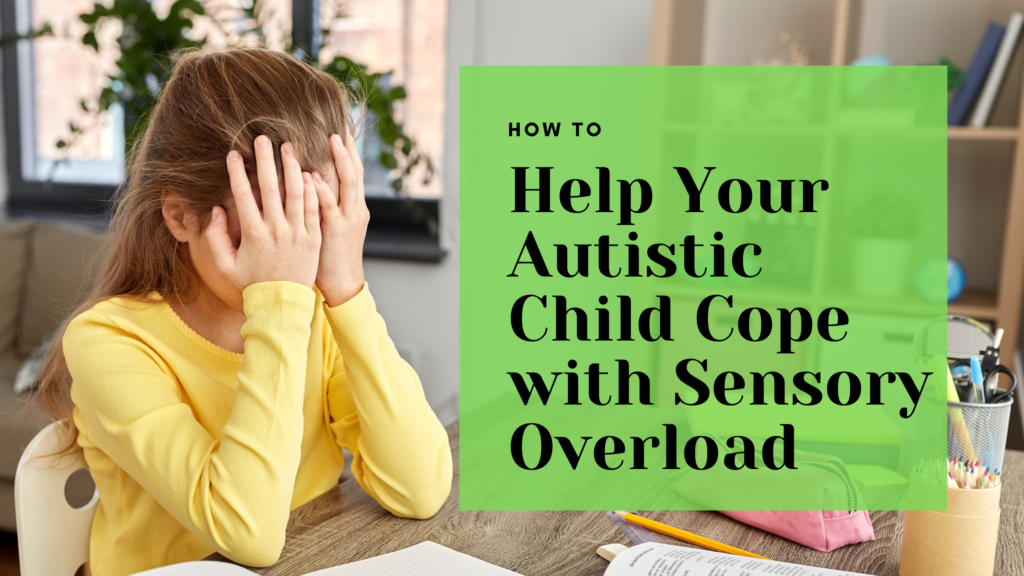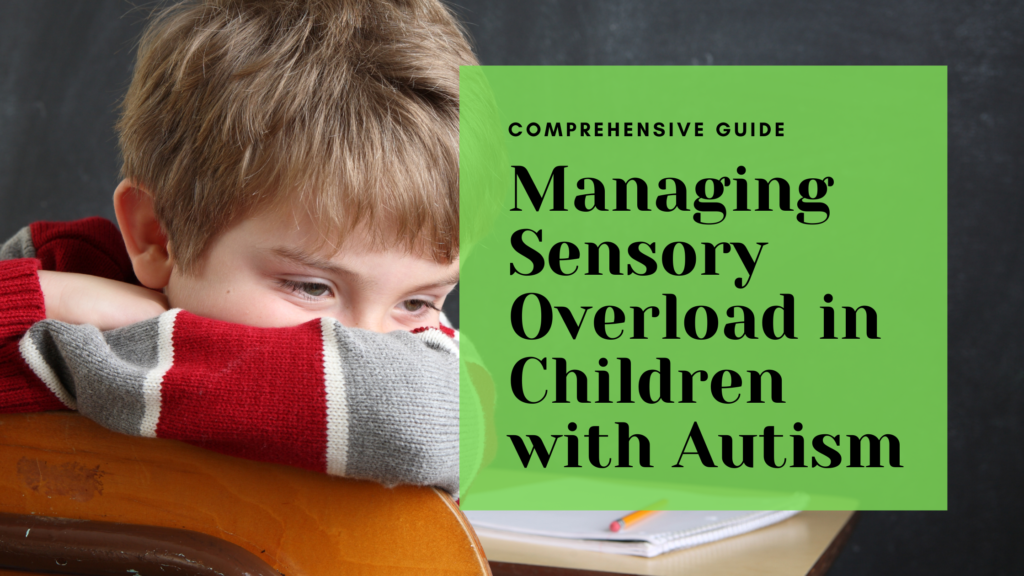I. Introduction
Sensory breaks are short, planned interruptions in daily activities that provide time for individuals to recover from overwhelming sensory experiences. These breaks are particularly significant for autistic individuals, who often experience sensory processing challenges. Autistic people may be either hypersensitive (over-responsive) or hyposensitive (under-responsive) to sensory input, which can lead to sensory overload, stress, and fatigue.
Sensory breaks are vital in helping autistic individuals regulate their sensory input, reducing anxiety and improving focus. This article will explain the benefits of sensory breaks, when they are needed, and how to implement them in different settings like home, school, or public places.
II. Understanding Sensory Processing in Autism
Sensory processing refers to the way the brain receives, interprets, and responds to sensory input from the environment. In autistic individuals, this process often works differently. Some may experience hypersensitivity, where they become overwhelmed by bright lights, loud sounds, or strong smells. Others may experience hyposensitivity, meaning they don’t register sensory input as easily and may seek out stronger stimuli to feel balanced.
When the brain struggles to process overwhelming sensory input, sensory overload can occur. This might cause anxiety, frustration, or even meltdowns. Sensory breaks offer a way to pause and reset by providing a calming environment or activity that helps the brain process sensory input more effectively. These breaks help prevent sensory overload, improving focus and behavior throughout the day.
III. Benefits of Sensory Breaks for Autistic Individuals
Regulation of Sensory Input
Sensory breaks help regulate sensory input by providing a pause in overwhelming environments. This allows the individual to step away from stimuli that are too intense, giving them time to recover and process the information at their own pace. As a result, they can return to tasks feeling calmer and more focused.
Improved Focus and Attention
By preventing overstimulation, regular sensory breaks improve attention spans and help autistic individuals stay on task. For instance, taking a short break to engage in a calming activity can make it easier for a child to focus during school lessons or complete homework.
Reduced Anxiety and Meltdowns
Sensory overload often leads to anxiety or meltdowns, where an individual may feel overwhelmed by their environment. Sensory breaks help reduce these episodes by offering a calming outlet before the sensory input becomes too much to handle.
Emotional and Physical Regulation
Sensory breaks also support emotional and physical regulation. By managing sensory input, individuals can better regulate their emotions and energy levels, maintaining balance throughout the day. This can reduce instances of irritability or frustration.
Enhanced Learning and Engagement
Taking sensory breaks can also enhance learning and engagement. After a break, individuals are more likely to feel refreshed and ready to participate in activities, leading to improved focus and success in both academic and social settings.
IV. When and Why Sensory Breaks Are Needed
Signs of Sensory Overload
It’s important to recognize the signs of sensory overload that indicate a need for a break. These signs may include restlessness, irritability, covering ears, or withdrawing from social interactions. When these behaviors are noticed, offering a sensory break can help prevent further distress.
Scheduled vs. As-Needed Breaks
Sensory breaks can be scheduled at regular intervals, such as every hour, to prevent sensory overload before it happens. Alternatively, as-needed breaks can be used when signs of sensory overload are observed. Both types of breaks are beneficial and can be tailored to the individual’s needs.
Transitions and Environmental Changes
Sensory breaks are especially helpful during transitions between activities or environments. Moving from a quiet space to a noisy one, or shifting from playtime to a focused task, can be overwhelming. A sensory break during these transitions helps ease anxiety and discomfort, making the change smoother.
V. Types of Sensory Breaks
Movement Breaks
For individuals who need to regulate through movement, movement breaks can include activities like jumping on a trampoline, swinging, or stretching. These activities engage the proprioceptive system (body awareness) and help release excess energy.
Tactile Sensory Breaks
Engaging the sense of touch through tactile sensory breaks can be calming. This might involve using sensory bins filled with sand or rice, handling textured objects, or using fidget tools that provide soothing tactile input.
Auditory Sensory Breaks
Some individuals benefit from auditory sensory breaks, where they listen to calming music or use noise-cancelling headphones to block out overwhelming sounds. This helps reduce auditory overstimulation and offers a peaceful reset.
Visual Sensory Breaks
Visual sensory breaks help individuals who are sensitive to light or visual clutter. These breaks might involve dimming the lights, looking at calming visuals (such as a lava lamp), or simply closing their eyes for a few moments to reduce visual input.
Proprioceptive and Vestibular Breaks
Proprioceptive and vestibular breaks involve activities that engage body awareness and balance. These can include using a weighted blanket for deep pressure, receiving gentle body squeezes, or using balance boards to regulate sensory input.
VI. Sensory Breaks in Different Settings
At Home
In the home environment, sensory breaks can be easily incorporated into daily routines. Creating a sensory corner with tools like weighted blankets, fidget toys, and noise-cancelling headphones gives the individual a dedicated space to take breaks when needed.
At School
Teachers can support sensory regulation by providing sensory-friendly break areas in the classroom. Flexible seating options, like sensory cushions or standing desks, allow students to adjust their seating for comfort. Teachers can also offer movement breaks or sensory tools like fidget spinners during lessons to help maintain focus.
In Public
Managing sensory overload in public places can be challenging, but bringing portable sensory tools like fidget toys or headphones can help. Parents and caregivers can also identify quiet areas in malls, parks, or restaurants where the individual can take a sensory break if they become overwhelmed.
VII. Creating a Sensory-Friendly Environment for Breaks
Designing a Sensory Space
A sensory-friendly space is essential for taking effective breaks. This space should be quiet, comfortable, and equipped with sensory tools tailored to the individual’s needs. Soft lighting, calming visuals, and sensory equipment like swings or balance boards can make the space more inviting.
Sensory Tools and Equipment
Common sensory tools for breaks include noise machines for auditory breaks, sensory swings for movement, and fidget toys for tactile stimulation. These tools help individuals manage their sensory input during breaks and provide relief from overwhelming stimuli.
Tailoring the Sensory Space to Individual Needs
Every autistic individual has unique sensory preferences. It’s important to tailor the sensory space to meet those specific needs. Some may prefer deep pressure from weighted blankets, while others may need visual stimulation like a calming light display.
VIII. How to Work with Occupational Therapists to Implement Sensory Breaks
Developing a Sensory Diet
Occupational therapists (OTs) play a key role in developing a sensory diet, a personalized plan that includes regular sensory breaks throughout the day. This diet is designed to regulate the individual’s sensory input, helping them feel balanced and focused.
Monitoring and Adjusting Sensory Breaks
OTs monitor the individual’s response to sensory breaks and make adjustments as needed. If a specific sensory break isn’t providing the expected relief, the OT might suggest alternative activities or tools. This ensures that the sensory breaks remain effective as the person’s sensory needs change over time.
Collaboration Between Teachers, Therapists, and Parents
Collaboration between teachers, therapists, and parents is crucial for ensuring consistency in implementing sensory breaks across different environments. Regular communication helps create a unified approach to managing sensory overload, whether at home, school, or in therapy.
IX. Long-Term Benefits of Sensory Breaks for Autistic Individuals
Building Sensory Self-Regulation
Over time, regular sensory breaks can help autistic individuals develop self-regulation skills. They learn to recognize when they are becoming overwhelmed and use breaks proactively to manage their sensory input.
Improving Emotional and Behavioral Regulation
By preventing sensory overload, sensory breaks can reduce the likelihood of meltdowns, anxiety, or aggressive behaviors. Individuals who use sensory breaks are better able to manage their emotions and maintain a calm state throughout the day.
Enhancing Independence
Consistent use of sensory breaks promotes independence. As individuals become more aware of their sensory needs, they rely less on others to manage sensory overload. This increased self-awareness allows them to navigate daily activities with more confidence.
X. Conclusion
Sensory breaks are a powerful tool for helping autistic individuals manage sensory overload, reduce anxiety, and improve emotional regulation. By incorporating sensory breaks into daily routines, parents, teachers, and caregivers can support better focus, calmness, and overall well-being. Collaboration with occupational therapists ensures that sensory breaks are tailored to individual needs and provide long-term benefits. With the right approach, sensory breaks can help autistic individuals feel more balanced, focused, and independent in all aspects of life.
References:
- Schaaf, R. C., & Benevides, T. W. (2014). The impact of sensory processing difficulties on daily life in children with autism spectrum disorder. Autism Research and Treatment, 2014, 1-11. https://doi.org/10.1155/2014/716870
- Dunn, W. (2001). The sensory profile: assessing the effect of sensory experiences on daily life in children. Occupational Therapy Journal of Research, 21(1), 4-16. https://doi.org/10.1177/153944920102100102
- Miller, L. J., Anzalone, M. E., Lane, S. J., Cermak, S. A., & Osten, E. T. (2007). Concept evolution in sensory integration: a proposed nosology for diagnosis. American Journal of Occupational Therapy, 61(2), 135-140. https://doi.org/10.5014/ajot.61.2.135
- National Autistic Society. (2020). Sensory differences. Retrieved from https://www.autism.org.uk/
Here’s a table with 10 key points based on the article:
| # | Key Point | Description |
|---|---|---|
| 1 | Understand the Need for Sensory Breaks | Sensory breaks allow autistic individuals to process overwhelming stimuli and avoid sensory overload. |
| 2 | Recognize Signs of Sensory Overload | Look for signs like restlessness, irritability, or withdrawal, which indicate the need for a sensory break. |
| 3 | Provide Regular Sensory Breaks | Incorporating sensory breaks into daily routines helps prevent anxiety, meltdowns, and overstimulation. |
| 4 | Use Movement-Based Sensory Breaks | Physical activities like jumping, swinging, or stretching provide proprioceptive input and help with regulation. |
| 5 | Incorporate Calming Sensory Tools | Offer sensory tools like noise-cancelling headphones, weighted blankets, or fidget toys to aid in calming during breaks. |
| 6 | Create Sensory-Friendly Spaces | Design a quiet, comfortable area at home or school with sensory tools that allow individuals to reset and self-regulate. |
| 7 | Schedule Breaks at Key Times | Use sensory breaks during transitions or before and after challenging activities to help ease anxiety and improve focus. |
| 8 | Work with Occupational Therapists | Collaborate with therapists to develop a personalized sensory plan that includes tailored breaks to meet the individual’s needs. |
| 9 | Monitor and Adjust Sensory Breaks | Regularly assess the effectiveness of sensory breaks and adjust the activities or timing to meet evolving sensory needs. |
| 10 | Promote Long-Term Sensory Regulation | Sensory breaks teach self-regulation, helping autistic individuals manage their sensory needs and reduce reliance on external support. |
This table outlines key tips to remember when implementing sensory breaks for autistic individuals, offering practical strategies for improving focus, behavior, and emotional regulation.


